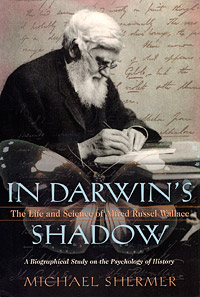

Adam Savage of the MythBusters. Discovery Channel. Photographer Blair Bunting / Getty Images.
Adam Savage & Neil deGrasse Tyson
This week on Skepticality, Derek & Swoopy return from the desert with highlights from “The Amazing Meeting 6” conference in Las Vegas (hosted by the James Randi Educational Foundation).
Joining them are two skeptics who are changing the face of popular science: MythBuster Adam Savage, and astrophysicist Dr. Neil deGrasse Tyson.
In his third appearance on Skepticality, Adam discusses his evolution from artist and model maker to skeptic and television scientist — as well as thoughts about his life after MythBusters. The incomparable Neil deGrasse Tyson (Director of the Hayden Planetarium at the American Museum of Natural History, current host of Nova Science Now, and the only astrophysicist to be named one of People magazine’s “Sexiest Men Alive”) talks with Swoopy about getting the United States back on track as science innovators. (He also sets the record straight about Pluto.)
Yesterday, July 1st marks the 150th anniversary of the 1858 discovery of natural selection by Charles Darwin and Alfred Russel Wallace. In this week’s eSkeptic, Michael Shermer celebrates this anniversary.
The Real Evolution Anniversary
by Michael Shermer
Next year much fanfare will unfold over the 200th anniversary of the birth of Charles Darwin (February 12, 1809) and the 150th anniversary of the publication of On the Origin of Species (November 24, 1859). Arguably, an even more significant anniversary is the date of the announcement of the discovery of natural selection on July 1, 1858, by Charles Darwin and Alfred Russel Wallace, read into the record of the Linnean Society of London.
Ever since that date controversy has surrounded natural selection (are there other mechanisms of evolutionary change?), evolutionary theory (its religious, political, and social implications), and even the discovery itself (did Darwin steal some of Wallace’s priority when he received the latter’s paper outlining the theory?). This article, based on a chapter in my biography of Alfred Russel Wallace — In Darwin’s Shadow (Oxford University Press) — recounts how the discovery came to be noted in the historical record, and who really deserves the credit.
A Fateful Day in June
In March, 1858, when Wallace was in the Malay Archipelago he had a sudden realization that “there is a general principle in nature which will cause many varieties to survive the parent species, and to give rise to successive variations, departing further and further from the original type.” He then deduced that those variations eventually become new species, thereby solving the problem that Darwin called “that mystery of mysteries,” the origin of species.
Wallace jotted down his theory in an essay entitled “On the Tendency of Varieties to Depart Indefinitely from the Original Type,” and apparently on March 9 “sent it by the next post to Mr. Darwin.” When Darwin received the package he expressed his shock to his friend, the great geologist Charles Lyell (in a letter dated the “18th” and presumed to be June): “I never saw a more striking coincidence. If Wallace had my manuscript sketch written out in 1842, he could not have made a better short extract! Even his terms now stand as heads of my chapters.”
The matter of who was first in the discovery of natural selection has been the subject of much controversy and confusion for three reasons: (1) the letter and essay from Wallace to Darwin is missing, making direct and tangible resolution impossible; (2) a misunderstanding of intellectual property and how priority disputes were settled at that time; and (3) the pugnacious zero-sum (win-lose) game model of priority does not recognize the cumulative, interactive, and social nature of the scientific enterprise.
Wallace’s co-discoverer status with Darwin is generally accepted by all biologists and historians. The question some raise, however, is this: should Wallace be given even more credit? Conspiracy theorists argue that Charles Lyell and Joseph Hooker, with Darwin’s knowledge (but not his direction), conspired to negate Wallace’s credit, while simultaneously boosting Darwin’s, by claiming Darwin received Wallace’s letter and essay earlier than the announced June 18, 1858 date, and that he probably spent that time fleshing out the missing pieces of his theory from Wallace’s essay, then feigned surprise and distress over Wallace’s parallel ideas.
The strongest associative evidence we have on the question of the date of arrival of Wallace’s paper is another letter sent by Wallace to Frederick Bates, the younger brother of his naturalist colleague and Amazon companion Henry Walter Bates. The letter is dated March 2 and is assumed to have been mailed on the same steamship as the letter to Darwin on March 9 (mail ships were not a daily occurrence). The Bates letter appeared in London on June 3. The clearly-dated, post-marked letter (no envelope — the letter itself was addressed and post-marked), is in possession of Wallace’s grandson, Alfred John Russel Wallace — where I held it in my hands — and is shown in Figure 1.
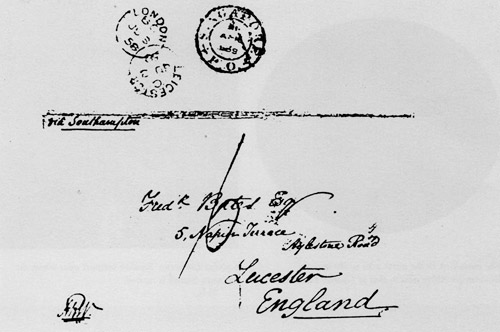
Figure 1. The envelope of Wallace’s letter to Frederick Bates
The cover of the letter bears Wallace’s direction “via Southampton” and was postmarked “Singapore Apr 21 58’” and “London Ju 3 58’.” In the letter Wallace tells Bates of the seemingly incoherent diversity of insect coloration in the Malay, and notes that “such facts as these puzzled me for a long time, but I have lately worked out a theory which accounts for them naturally.” That theory, “lately worked out,” was obviously in reference to the essay sent to Darwin.
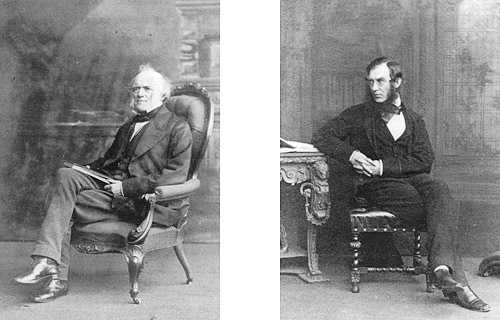
Figure 2. Charles Lyell (left) and Joseph Hooker (right)
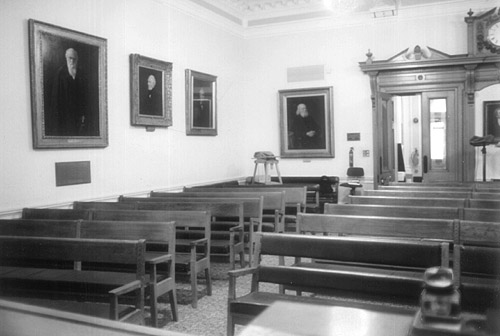
Figure 3. The Linnean Society of London meeting room
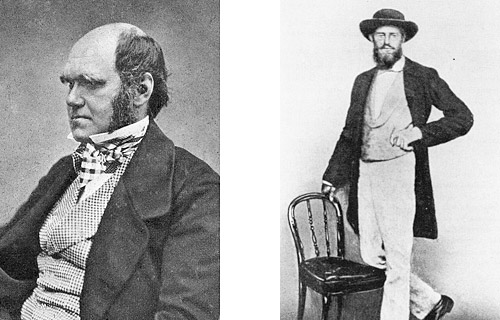
Figure 4. Charles Darwin (left) and Alfred Russel Wallace (right) around the time of the Linnean Society announcement of their discovery of natural selection
With the primary evidence missing in this historical mystery we have to piece together from circumstantial evidence what really happened. The extreme interpretation of a conspiratorial cover-up is not supported by the evidence. If Darwin were going to rig (or allow to be rigged) the editorial presentation of the papers to award him priority; or worse, plagiarize from Wallace certain key ideas (such as the principle of the divergence of species), why announce the arrival of Wallace’s paper and submit it for publication in the first place? Why not either just take what was needed, or, if Wallace’s paper added nothing new to the theory, destroy it and the cover letter and blame the loss on an inefficient postal service, or the mishandling of his mail at Down, or whatever? If one is going to accuse Darwin of such devious finagling, or plagiarization, then would not the same guileful and scheming personality think of complete elimination of Wallace’s essay as a successful strategy?
Solving the Priority Mystery
Even without a complete set of original documents from which to piece together every detail of what happened in this historical mystery, we can solve the case in the same manner that all historical scientists resolve disputes when direct observation and empirical evidence is scant or non-existent — a preponderance of evidence and a consilience of inductions that converges to a single conclusion. There are several lines of evidence to explore.
On the matter of what happened to the original Wallace essay and letter it should be said that Darwin’s near obsession at keeping all correspondence does make one a bit suspicious. Yet even here further reflection shows that most likely nothing was afoot. Darwin’s son Francis, for example, when compiling his father’s letters for publication five years after his death, noted that before 1862 Darwin was not the paper pack rat of his later years: “It was his custom to file all letters received, and when his slender stock of files (‘spits’ as he called them) was exhausted, he would burn the letters of several years, in order that he might make use of the liberated ‘spits.’ This process, carried on for years, destroyed nearly all letters received before 1862. After that date he was persuaded to keep the more interesting letters, and these are preserved in an accessible form.”
But surely Darwin would not have destroyed one of the most important letters and manuscripts he ever received. On this we can be certain, unless Darwin never got the materials back after publication. Recall that the last person to handle Wallace’s manuscript, as far as we can trace it, was not Darwin but someone at the Linnean Society of London who typeset it for publication in the Proceedings in August. And before that Lyell had the manuscript, which Darwin sent him along with his June 18th letter of despair. If there is a culprit in the caper of the missing manuscript, Darwin is not at the top of the list.
As for the charge that Darwin took materials from Wallace’s 1858 manuscript, such as the principle of divergence, Darwin’s contribution to the joint Linnean Society papers did not include materials developed in 1858; rather, he included a letter to the American botanist Asa Gray, written in September, 1857, almost a year before the Wallace essay. If Darwin had cribbed the concept of divergence from Wallace, why submit this older version? In any case, the principle of divergence was listed in the table of contents of his Natural Selection manuscript in March, 1857.
A content analysis of Darwin’s letters also points to a June 18th date. Consider what Darwin was doing before the arrival of the Wallace manuscript. In 1858 Darwin was knee deep in writing a massive, multi-volume work entitled Natural Selection. He planned on taking several more years to complete it, and without outside pressure to publish he was in no hurry. He had seen the fallout of other theorists who had published prematurely (Robert Chamber’s anonymously published book, Vestiges, brutally panned by the science reviewers, being the most obvious), and he was not about to be subjected to that kind of criticism. But Wallace’s 1858 letter and essay changed all that, and the change is most notable in Darwin’s correspondence immediately after June 18. Before that date there was no hint of rushing to complete his book.
For example, on May 16 he told Joseph Hooker “I presume you will have done the horrid job of considering my M.S. — I am in no sort of hurry, more especially as I know full well you will be dreadfully severe. — ” On May 18 he reiterated to Hooker: “There is not least hurry in world about my M.S. I would rather you leave it till you feel disengaged, if that time ever comes to you. — ” On the same day Darwin wrote to Syms Covington, his former assistant on the Beagle, that his big work was going to take some time to complete: “This work will be my biggest; it treats on the origin of varieties of our domestic animals and plants, and on the origin of species in a state of nature. I have to discuss every branch of natural history, and the work is beyond my strength and tries me sorely. I have just returned from staying a fortnight at a water-cure establishment, where I bathe thrice a day, and loiter about all day long doing nothing, and for the time it does me wonderful good.” These are hardly the words of a man about to see his life’s work forestalled by another.
After June 18 the Darwin correspondence changes dramatically. In a June 25 letter to Lyell, for example, after again berating himself for caring about priority, Darwin calls it a “trumpery affair” and a “trumpery letter influenced by trumpery feelings.” After the July 1st meeting and the resolution of the priority question, his anxiety waned and by the 13th of July he could reflect to Hooker that he “always thought it very possible that I might be forestalled, but I fancied that I had grand enough soul not to care; but I found myself mistaken & punished; I had, however, quite resigned myself & had written half a letter to Wallace to give up all priority to him & shd. certainly not have changed had it not been for Lyell’s & yours quite extraordinary kindness.” Any lingering doubts about whether Darwin had a hand in arranging the sequence of the Linnean Society papers are put to rest in his acknowledgment to Hooker that “I am much more than satisfied at what took place at Linn. Socy — I had thought that your letter & mine to Asa Gray were to be only an appendix to Wallace’s paper. — ”
As for Wallace’s knowledge of and response to the Linnean Society presentation, a letter he wrote to Joseph Hooker on October 6, 1858, from the island of Ternate in the Malay Archipelago, reveals that Wallace new about the arrangement before he returned to England in 1862, and that he was, in fact, pleased with how it was handled:
My dear Sir
I beg leave to acknowledge the receipt of your letter of July last, sent me by Mr. Darwin, & informing me of the steps you had taken with reference to a paper I had communicated to that gentleman. Allow me in the first place sincerely to thank yourself & Sir Charles Lyell for your kind offices on this occasion, & to assure you of the gratification afforded me both by the course you have pursued & the favourable opinions of my essay which you have so kindly expressed. I cannot but consider myself a favoured party in this matter, because it has hitherto been too much the practice in cases of this sort to impute all the merit to the first discoverer of a new fact or a new theory, & little or none to any other party who may, quite independently, have arrived at the same result a few years or a few hours later.
I also look upon it as a most fortunate circumstance that I had a short time ago commenced a correspondence with Mr. Darwin on the subject of “Varieties,” since it has led to the earlier publication of a portion of his researches & has secured to him a claim of priority which an independent publication either by myself or some other party might have injuriously affected, — for it is evident that the time has now arrived when these & similar views will be promulgated & must be fairly discussed.
It would have caused me such pain & regret had Mr. Darwin’s excess of generosity led him to make public my paper unaccompanied by his own much earlier & I doubt not much more complete views on the same subject, & I must again thank you for the course you have adopted, which while strictly just to both parties, is so favourable to myself.
Interestingly, the letter offers a glimpse into the rules of intellectual property and priority determination in previous centuries. Today, priority is established largely by publication — first in print or to the patent office wins the prize. But in earlier centuries it was enough to have communicated an idea to someone else as long as there was a paper trail. Wallace felt fortunate that he received any credit at all because by the priority rules of the day Darwin was clearly the winner, having established priority with his 1844 essay shared with his colleagues Lyell and Hooker, and his letter to Asa Gray on September 5, 1857.
Darwin’s Surprise or Chagrin?
What is surprising in this whole matter, if anything, is Darwin’s apparent astonishment at the receipt of Wallace’s essay. A clipping of a letter in the Darwin archives at Cambridge from Wallace to Darwin, dated (in Darwin’s hand) September 27, 1857, clearly shows that Wallace was continuing work on the problem of the origin of species that he had begun with the publication of his 1855 Sarawak paper, for which he voices to Darwin his disappointment in a lack of response. The fragment begins in mid sentence “…of May last, that my views on the order of succession of species were in accordance with your own, for I had begun to be a little disappointed that my paper had neither excited discussion nor even elicited opposition. The mere statement and illustration of the theory in that paper is of course but preliminary to an attempt at a detailed proof of it, the plan of which I have arranged, and in part written, but which of course requires much [research in English libraries] & collections, a labor which I look….” (The letter extract is truncated because of deliberate cutting by Darwin, who clipped sections from letters and articles for later use in constructing manuscripts.)
It seems clear from this passage that the only thing Darwin could have been surprised about was how quickly Wallace completed a promised “detailed proof” of the theory that did, in fact, loosely parallel Darwin’s and result in the 1858 essay sent to Down in the spring. But it leaves one to wonder what plan Wallace was working on that he had already written part of, since, by his own account, the 1858 essay was composed in the course of two nights in late February, a full five months after this letter to Darwin. Did his feverish discovery overturn the ideas he was developing in this 1857 plan? If not, what happened to this manuscript? If so, then why did Wallace not expand the 1858 essay into a longer book-length manuscript? One possible answer may be found in a letter written to Bates between these two dates, on January 4, 1858, in which Wallace discusses what appears to be this same “plan” or “work.”
To persons who have not thought much on the subject I fear my paper on the succession of species [the Sarawak Law of 1855] will not appear so clear as it does to you. That paper is, of course, only the announcement of the theory, not its development. I have prepared the plan & written portions of an extensive work embracing the subject in all its bearings & endeavouring to prove what in the paper I have only indicated. I have been much gratified by a letter from Darwin, in which he says that he agrees with “almost every word” of my paper. He is now preparing for publication his great work on Species & Varieties, for which he has been collecting information 20 years. He may save me the trouble of writing the 2nd part of my hypothesis, by proving that there is no difference in nature between the origin of species & varieties, or he may give me trouble by arriving at another conclusion, but at all events his facts will be given for me to work upon. Your collections and my own will furnish most valuable material to illustrate & prove the universal applicability of the hypothesis.
Here a plausible scenario presents itself. Wallace, after years of collecting and observing, formed a hypothesis — “On the Law which has regulated the Introduction of New Species” (the 1855 “Sarawak Law”). Lacking further supportive evidence for a mechanism to drive evolutionary change, coupled to the fact that he perceived his paper to be largely ignored by the scientific community, Wallace continued about his business of collecting in relative anonymity, but never abandoned his ultimate quest to understand the origin of species. He knew that Darwin had been working on the problem for twenty years and was currently writing his “big species book.” Wallace, in no position (either logistically in his travels, or scientifically in his research) to complete a work thorough enough to be well received, decided to sit back and wait to see what Darwin would produce. If Darwin was successful (that is, if Wallace agreed with his arguments), then he would have no need to repeat what had already been done (“He may save me the trouble of writing the second part of my hypothesis”). If Darwin was not successful (“he may give me trouble by arriving at another conclusion”), then Wallace could respond accordingly with his own theory. It seems clear that Darwin’s Origin satisfied the first set of criteria, and Wallace never did write his own “big species book” until he published Darwinism in 1889, the very title of which indicates his own leanings on the priority question.
The Zero-Sum Game of Science
This priority incident is emblematic of a larger problem in the history of science where the cumulative, interactive, and social nature of the enterprise is not always recognized. Wallace’s priority credit and recognition for scientific achievement can and should be significantly enhanced without taking anything away from Darwin. Both Darwin and Wallace recognized the gain to be had through cooperative interaction. Consider this exchange of letters between the two men. The first, an April 6, 1859, letter from Darwin to Wallace, reveals a man paying the highest respect for a fellow winner in this game of scientific cooperation:
You cannot tell how I admire your spirit, in the manner in which you have taken all that was done about establishing our papers. I had actually written a letter to you, stating that I could not publish anything before you had published. I had not sent that letter to the post when I received one from Lyell and Hooker, urging me to send some ms. to them, and allow them to act as they thought fair and honourably to both of us. I did so.
Wallace always responded to Darwin with an equally generous dose of recognition, as in this passage from a May 29, 1864 letter:
As to the theory of Natural Selection itself, I shall always maintain it to be actually yours and yours only. You had worked it out in details I had never thought of, years before I had a ray of light on the subject, and my paper would never have convinced anybody or been noticed as more than an ingenious speculation, whereas your book has revolutionized the study of Natural History, and carried away captive the best men of the present age.
This is no attempt to whitewash Darwin, nor is it a naive and unrealistic portrayal of what in reality was the highly competitive world of 19th-century science in which Darwin was fully ensconced. For several weeks Darwin did a lot of ethical hand-wringing. On June 25, 1858, just a week after the letter announcing his dismay over receiving the Wallace manuscript, he wrote Lyell again, expressing his moral dilemma over the priority question. It is a most revealing passage that shows not the anxiety of a man who has done something unethical, but of a just and fair individual caught in the tension between win-lose and win-win scenarios:
There is nothing in Wallace’s sketch which is not written out much fuller in my sketch copied in 1844, & read by Hooker some dozen years ago. About a year ago I sent a short sketch of which I have copy of my views (owing to correspondence on several points) to Asa Gray, so that I could most truly say & prove that I take nothing from Wallace. I shd. be extremely glad now to publish a sketch of my general views in about a dozen pages or so. But I cannot persuade myself that I can do so honourably. Wallace says nothing about publication, & I enclose his letter. — But as I had not intended to publish any sketch, can I do so honourably because Wallace has sent me an outline of his doctrine? — I would far rather burn my whole book, than that he or any other man shd. think that I had behaved in such a paltry spirit. Do you not think that his having sent me this sketch ties my hands?
The Plus-Sum Game of Science
A plus-sum model — the gain of one is the gain of another — recognizes the contingent, cooperative, and interdependent nature of scientific discovery. Both Darwin and Wallace were winners in the game to understand the origin of species. Certainly Wallace believed he profited from the Linnean Society arrangement, as indicated in a letter to his mother on October 6, 1858, the same day he wrote Darwin: “I have received letters from Mr. Darwin and Dr. Hooker, two of the most eminent naturalists in England, which has highly gratified me. I sent Mr. Darwin an essay on a subject on which he is now writing a great work. He showed it to Dr. Hooker and Sir C. Lyell, who thought so highly of it that they immediately read it before the Linnean Society. This assures me the acquaintance and assistance of these eminent men on my return home.”
Consider Wallace’s position at this time. He was a relatively unknown 35-year-old amateur naturalist whose only theoretical work — the 1855 Sarawak Law paper — was largely ignored. He had been away from England and the center of scientific activity already four years, and was, by all rights, still cutting his teeth on such weighty theoretical matters. Darwin, by contrast, was 49 years old, fairly well-known in scientific circles, had already published numerous important scientific books and articles, and had shared his theoretical ideas with the most important scientists in England and America. Wallace did not feel the loser because he was not. An essay written in two nights, sent to the right place at the right time, put him in the scientific inner circle and into the historical record — his name next to Darwin’s — forever.
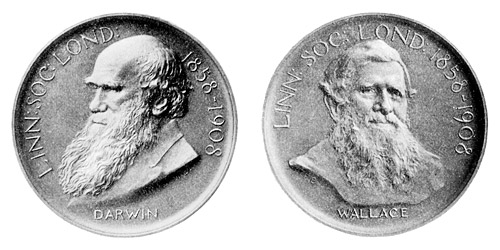
Figure 5. The Darwin-Wallace Medal Awarded to Wallace by the Linnean Society of London on July 1, 1908


